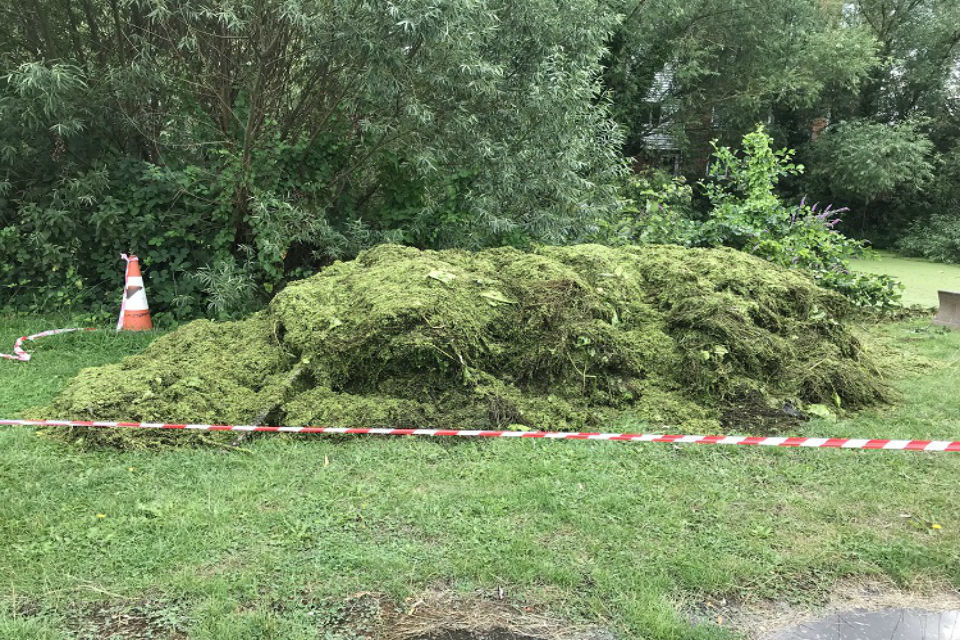
The River Colne as seen from the bridge after the weed was cleared by EA officers
Environment Agency officers have been working hard to remove duck weed and invasive azolla from the River Colne in Colchester.
Due to prolonged dry weather this year and last year, there has been an increased amount of surface weed (including invasive azolla and duck weed) along the river. The dry weather causes low flows and together with higher temperatures, this encourages the vegetation to grow.
The Environment Agency has been trialling different techniques to remove the weed to create some refuge areas for the fish. This improves the dissolved oxygen levels in the water, which the fish depend on.
Officers recently went out in a boat and used a boom to gather the duck weed, then a digger to scoop the aquatic plant out of the river. The work was carried out over a week at the end of July and more is planned.

A mound of duck weed and azolla weed removed from the river
Ben Norrington, fisheries officer in East Anglia, said:
We are clearing the surface weed proactively to avoid any incident that could arise from having this vegetation and impact the water quality.
As temperatures warm up, the surface weed sucks the oxygen out of the water. Then we have thunder storms, which lowers the temperature again. High temperature water mixed with low temperature rain can cause an oxygen crash and that's what will kill the fish.
The duck weed remaining has been thinned out meaning the sun and rain can break through, which will improve the levels of oxygen in the water.
The officers have also carried out duck removal on the River Bret, the River Gipping and on Lady Island in Sudbury.






